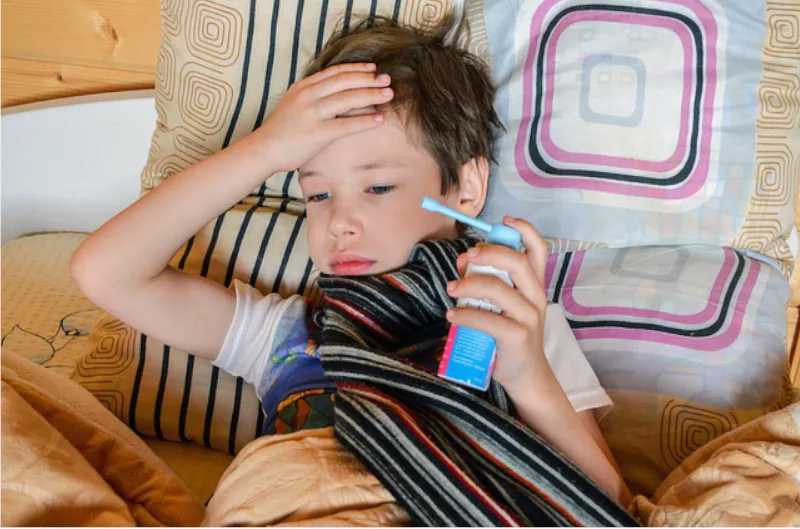Home » Steroid-Induced Psychosis in the Pediatric Population
Steroid-Induced Psychosis in the Pediatric Population

June 11, 2019
From The Carlat Child Psychiatry Report
Ahhan Nazeer, MD.
Dr. Nazeer has disclosed that he has no relevant financial or other interests in any commercial companies pertaining to this educational activity.
Review of: Hodgins GE et al, J Child Adolesc Psychopharmacol 2018;28(5):354–359
Childhood psychosis is a rare disorder, and accurate diagnosis is crucial. Recently, clinicians at the University of Miami Miller School of Medicine reported a case of steroid-induced psychosis in a pediatric patient.
In the case report, a 12-year-old Haitian girl was diagnosed with discoid lupus erythematosus after she presented with fever, fatigue, and anemia. She was started on prednisolone and hydroxychloroquine, and a few days later presented with mutism, drooling, and altered mental status. She was admitted to the PICU, and her symptoms were assumed to be related to her lupus; therefore, she was treated with IV prednisolone. After 8 days of admission, the patient remained disoriented, mute, and paranoid. After a negative organic workup, the psychiatry consultation team recommended tapering the steroid and started her on clonazepam 0.25 mg BID and risperidone 0.5 mg BID (later switched to haloperidol). After 12 days, the patient was much improved—she was more verbal and had no hallucinations. Once the steroid was entirely discontinued, she became completely organized and was discharged on haloperidol 5 mg/day and lorazepam 1 mg twice daily.
The authors did a literature review and found 15 other case reports of steroid-induced psychosis in children and adolescents. Asthma was the most common indication for the initiation of steroids. The higher the dose of steroids (>40–80 mg/day), the more chances of psychiatric manifestations. Discontinuation of steroids is the gold standard and typically completely diminishes the symptoms within a few days to 1 month. For instances where steroid taper is not possible, a trial of benzodiazepines and antipsychotics was helpful.
CCPR’s Take
This case highlights the need to search for specific causes of psychotic symptoms that can usually be resolved, avoiding unnecessary long-term treatments.
Child PsychiatryChildhood psychosis is a rare disorder, and accurate diagnosis is crucial. Recently, clinicians at the University of Miami Miller School of Medicine reported a case of steroid-induced psychosis in a pediatric patient.
In the case report, a 12-year-old Haitian girl was diagnosed with discoid lupus erythematosus after she presented with fever, fatigue, and anemia. She was started on prednisolone and hydroxychloroquine, and a few days later presented with mutism, drooling, and altered mental status. She was admitted to the PICU, and her symptoms were assumed to be related to her lupus; therefore, she was treated with IV prednisolone. After 8 days of admission, the patient remained disoriented, mute, and paranoid. After a negative organic workup, the psychiatry consultation team recommended tapering the steroid and started her on clonazepam 0.25 mg BID and risperidone 0.5 mg BID (later switched to haloperidol). After 12 days, the patient was much improved—she was more verbal and had no hallucinations. Once the steroid was entirely discontinued, she became completely organized and was discharged on haloperidol 5 mg/day and lorazepam 1 mg twice daily.
The authors did a literature review and found 15 other case reports of steroid-induced psychosis in children and adolescents. Asthma was the most common indication for the initiation of steroids. The higher the dose of steroids (>40–80 mg/day), the more chances of psychiatric manifestations. Discontinuation of steroids is the gold standard and typically completely diminishes the symptoms within a few days to 1 month. For instances where steroid taper is not possible, a trial of benzodiazepines and antipsychotics was helpful.
CCPR’s Take
This case highlights the need to search for specific causes of psychotic symptoms that can usually be resolved, avoiding unnecessary long-term treatments.
KEYWORDS adolescents child_psychiatry children free_articles pediatric psychosis research-update steroids teens
Issue Date: June 11, 2019
Table Of Contents
Recommended
Newsletters
Please see our Terms and Conditions, Privacy Policy, Subscription Agreement, Use of Cookies, and Hardware/Software Requirements to view our website.
© 2025 Carlat Publishing, LLC and Affiliates, All Rights Reserved.


_-The-Breakthrough-Antipsychotic-That-Could-Change-Everything.webp?t=1729528747)



